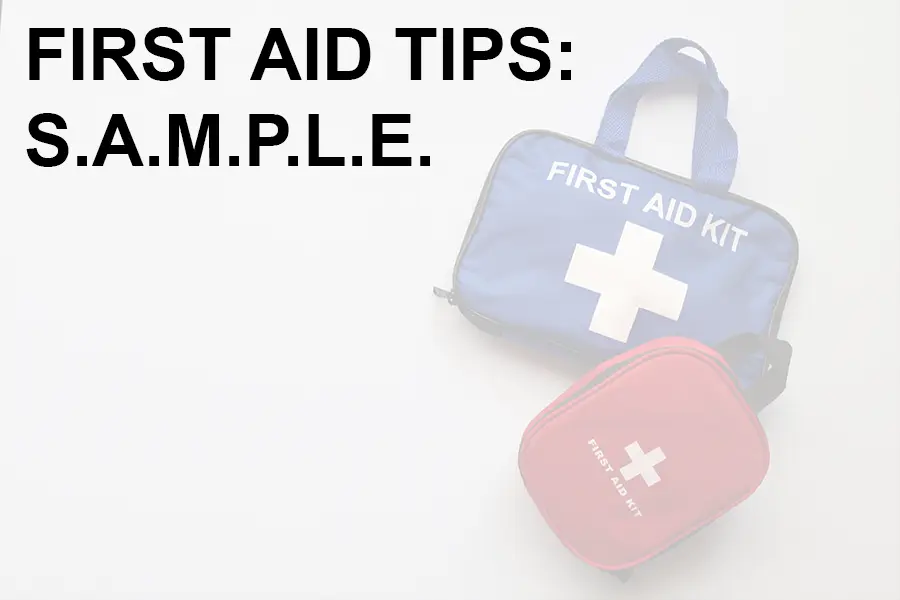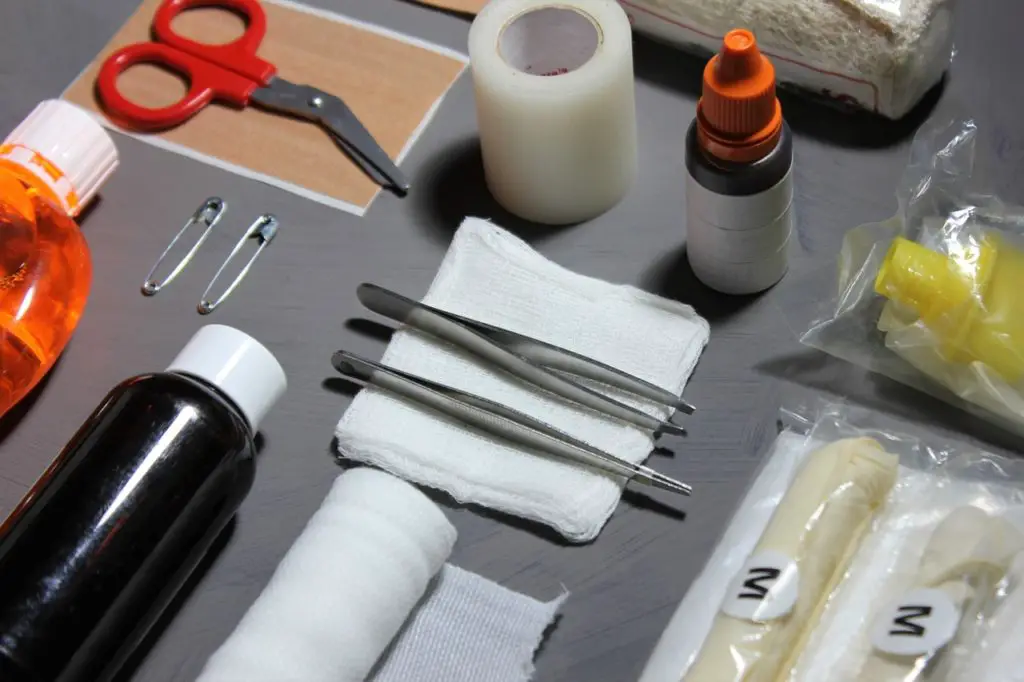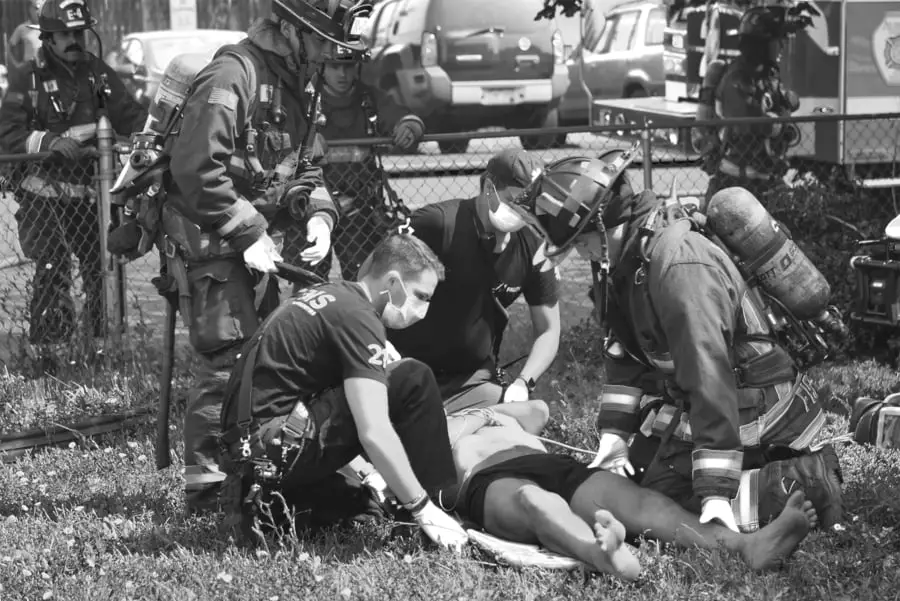Thanks to the information age, more people are able to learn medical tips and tricks. First responders, both citizen and professional, can stay up to date by using mnemonics to memorize and recall important information. One such mnemonic that is taught in medical, first aid, and EMS (Emergency Medical Services) schools across the United States is S.A.M.P.L.E. This article will explain what SAMPLE stands for and how it is used in medicine.
SAMPLE is a mnemonic used to help medical professionals remember to ask specific questions when responding to an emergency. The information gathered from a SAMPLE , also called a SAMPLE history, contains vital information that first responders will pass along as the patient transfers from one provider to another within the healthcare system. For example, when a patient arrives by ambulance to the emergency room, the paramedic will give a verbal patient report to doctors and nurses. Part of that report would be a SAMPLE history.
SAMPLE stands for:
- Signs & Symptoms
- Allergies
- Medications
- Past medical history
- Last oral intake or Last in or out
- Events leading up to emergency
Signs and Symptoms
The “S” in SAMPLE stands for “Signs & Symptoms”. A symptom is a physical feature that shows a medical condition or diagnosis. For example, a person experiencing chest pain might be having a heart attack. Start with the basics by asking the person a simple question such as: “How are you feeling right now?”. Signs are like symptoms and, as a first responder, you should be actively looking for them. For example, a patient could state they are “having trouble breathing” and that is their symptom. Their sign could be that they appear to be physically out of breath or breathing rapidly. Signs and symptoms help medical professional make an accurate diagnosis.
Allergies
The “A” in SAMPLE stands for “Allergies”. It is important to ask the patient if they are allergic to any medications or foods. Some people have very serious allergies to specific medications or foods and that information is critical for medical professionals to know. If a patient is allergic to the pain medication Morphine, then it is vital that anyone who is going to treat that patient has that information and knows to not administer that drug. The question you can ask is simply, “Are you allergic to any medications or foods?”.
Medications
The “M” in SAMPLE stands for “Medications”. Patients of all ages take daily medications for a variety of health issues. From medications to help with diabetes or high blood pressure, to inhalers for asthma or narcotics for chronic pain, often patients are on more than one medication at a time. Knowing what medications a patient is on is critical because medications can counteract or interact with each other. The question you can ask is, “Do you take any medications daily?”.
Past Medication History
The “P” in SAMPLE stands for “Past medical history.” A past medical history includes any medical diagnosis the person currently has or any conditions that have occurred to them in the previously. For example, a patient can have a past medical history of a stroke. Or a patient could currently be undergoing treatment for cancer. Either way, it is important to get as complete of a medical history as possible as this will aid other healthcare professionals. You can ask, “What sort of medical history do you have?”.
Last Oral Intake or Last In or Out
The “L” in SAMPLE stands for “Last oral intake”. This is important if the patient would require an emergent surgery. The surgery team needs to know when the last time this patient ate or drank anything. If you have ever had surgery, you know and understand this because normally they require “nothing by mouth” for up to 8 hours before surgery. This information is important to pass on to the next set of medical professionals. You can simply ask, “When was the last time you had anything to eat or drink?”.
Sometimes the “L” is taught as “last in or out”. Knowing the last time a person used the bathroom or had a bowel movement can be a helpful piece of information for health care professionals to know.
Events leading up to emergency
The “E” in SAMPLE stands for “Events leading up to emergency”. Basically, this is the answer to the question “what happened?”. Was that patient mowing their lawn and suddenly started having chest pain? Were they driving a car and had to pull over because they felt like they were going to pass out? Did the patient fall or injure themselves? This is important for both the first responder and other medical professionals to know because it helps piece together the puzzle of what happened with this patient. As the first person on scene of a medical emergency, you can simply ask, “What happened here today?”.
Final thoughts
This summary of SAMPLE should help citizens wanting to learn more about first responders and first aid administration. While facing an emergency, asking the right questions and passing along the information to the appropriate medical professionals could very well save lives.




